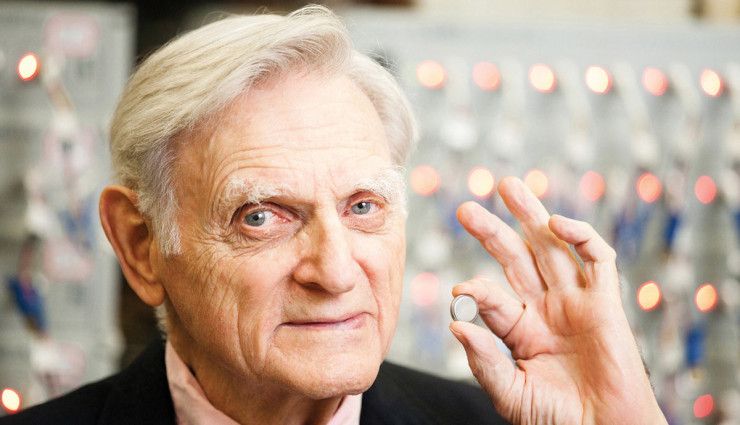John Goodenough was the head of a team in 1980 that reached a scientific breakthrough that ultimately led to the creation of lithium-ion batteries. It was a big deal at the time, and now just about every battery-powered device in your home uses lithium-ion, and so does your phone and probably any hybrid vehicle you might own as well. But, while lithium-ion batteries do have a higher energy density than other technologies, they also have some serious drawbacks.
First, if the demand for lithium continues to grow, it could become very scarce in the near future. Plus, on top of that, they are combustible, take a fair amount of time to charge, and still can’t provide us with the type of energy we need for electric vehicles to really take off. But, Mr. Goodenough – who is now 94 years old – has been working with a team at the University of Texas and has made a new breakthrough in battery technology – the solid-state battery.
So what are the benefits of this potential new technology? Well, the batteries are cheap to make in comparison, don’t require elements like lithium to work, are noncombustible, and are longer lasting. They also charge faster and can perform in subzero weather. That’s huge, considering we’re throwing lithium-ion batteries into cars like the element is going out of style (and, it could, with the demand for hybrid and electric vehicles expected to increase steadily over the foreseeable future). But it could take considerable time before solid-state battery technology actually makes it to the market.
Keep reading for the rest of the story
When Will the Technology be Available?
See, when Goodenough and his team made that big breakthrough back in 1980, it took 11 years before it was used in a production application, with Sony being the first to commercialize the technology. But, don’t lose hope for those electric cars with a 1,000-mile range and short charging times. Goodenough and his team are continuing their research and working on several patents. The next major step is to work with one or more manufacturers to do some real-life testing in electric vehicles and other energy storage devices.
In a statement released by the University of Texas, Goodenough said, “Cost, safety, energy density, rates of charge and discharge, and cycle life are critical for battery-driven cars to be more widely adopted. We believe our discovery solves many of the problems that are inherent in today’s batteries.”
So, there you have it. Obviously, Goodenough is confident that this breakthrough will bring us the next big thing in energy storage, and it could very well cast a huge shadow over battery technologies currently in development by brands like Tesla and even Kreisel Electric, the latter of which has practically perfected the lithium-ion battery cell. Hopefully, this new breakthrough sees the funding and additional work it needs to hit the market much sooner than the last time Goodenough made a breakthrough in battery technology.

